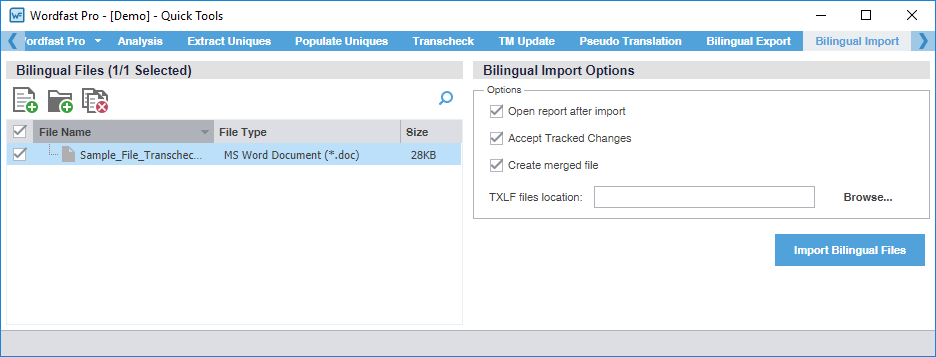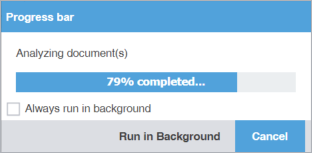Use Bilingual Import to re-import your translated or edited Microsoft Word (Word) bilingual export document.
Bilingual Import options allow you to open a report, accept tracked changes, and create a merged file from a translated Word document.
| Alert: You must upload both the translated or edited bilingual Word document and the source TXLF file you used during export. |
| Best Practice: Since imports overwrite content from the export, create a backup of the original TXLF file for reference. |
To conduct a Quick Tools bilingual import:
 is displayed. If the files are not paired,
is displayed. If the files are not paired,  is displayed.
is displayed.

